History of the M203 Grenade Launcher
March 9th, 2023
7 minute read
Intended to enhance the offensive capabilities of U.S. troops, the M203 grenade launcher attracted the attention of everyone from the Soviet Union to Hollywood. In today’s article, Will Dabbs takes a look at the 40mm launcher. — Editor
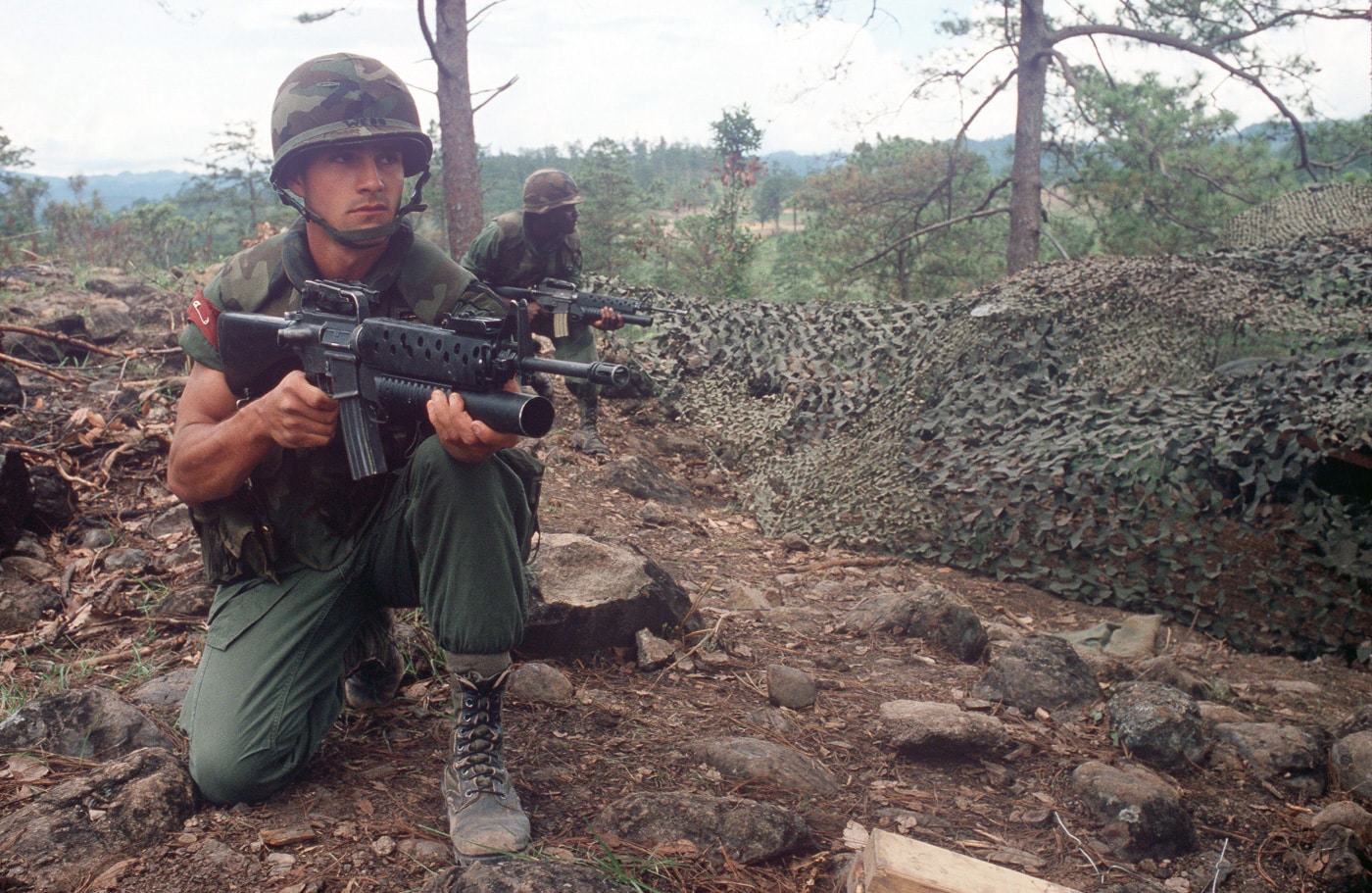
Say Hello to My Little Friend… It’s 1983 in Miami, and the illicit drug trade transformed penniless immigrants into millionaires in a matter of months. Tony Montana was the poster child. The product of a hardscrabble upbringing in the squalor of Castro’s Cuba, Tony had schemed, dealt, and murdered his way to the top of his massive cocaine empire. However, that simply meant he had a long way to fall.
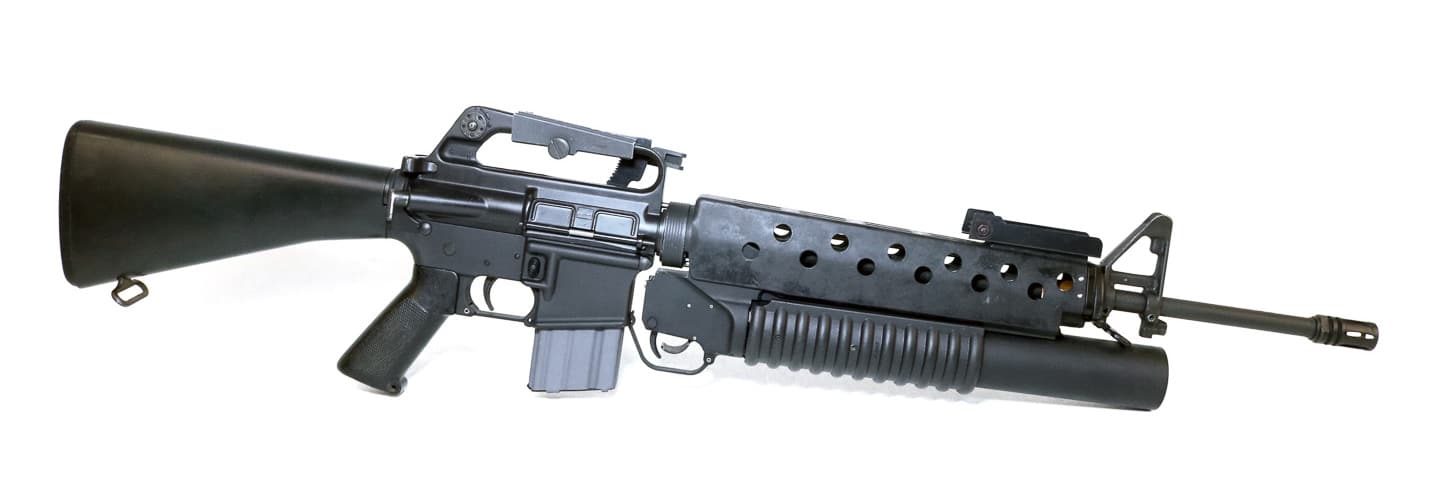
Along the way, Tony made some powerful enemies. The combination of poor judgment, a penchant for violence, a personal drug habit, and the inability to manage chaos on such an epic scale meant that now Tony sat behind his expansive desk friendless and alone. Meanwhile, a veritable army of hired sicarios staged downstairs ready to turn him off. After snorting enough coke to orbit a rhino, Tony snatched up his M16-cum-M203 grenade launcher, charged it with an M433 HEDP (High Explosive Dual Purpose) grenade along with a pair of 30-round box magazines taped back-to-back, and faced the door.
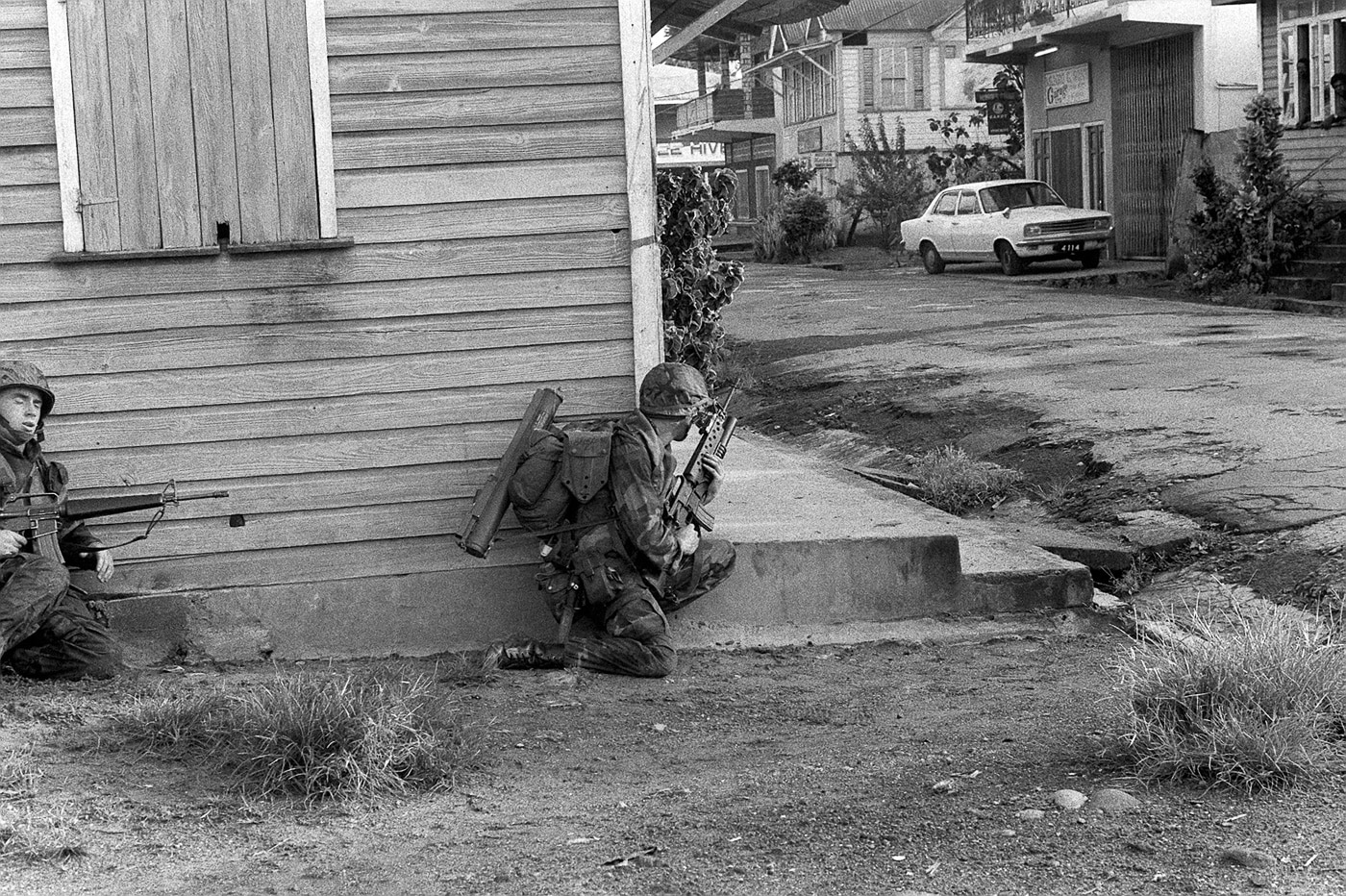
In what has come to be one of the most iconic lines in the history of cinema, Al Pacino’s Tony Montana shouted, “Say hello to my little friend!” before blowing the doors off their hinges with a 40mm round. The despotic drug lord then engaged in a roaring gun battle with the accumulated hitmen. Before it was over Tony had been shot about a zillion times. The chief hitman, nicknamed the Skull, then capped him from behind with a side-by-side 12-bore. Tony’s body pitched forward artistically to land in his indoor fountain. Fake blood went everywhere.
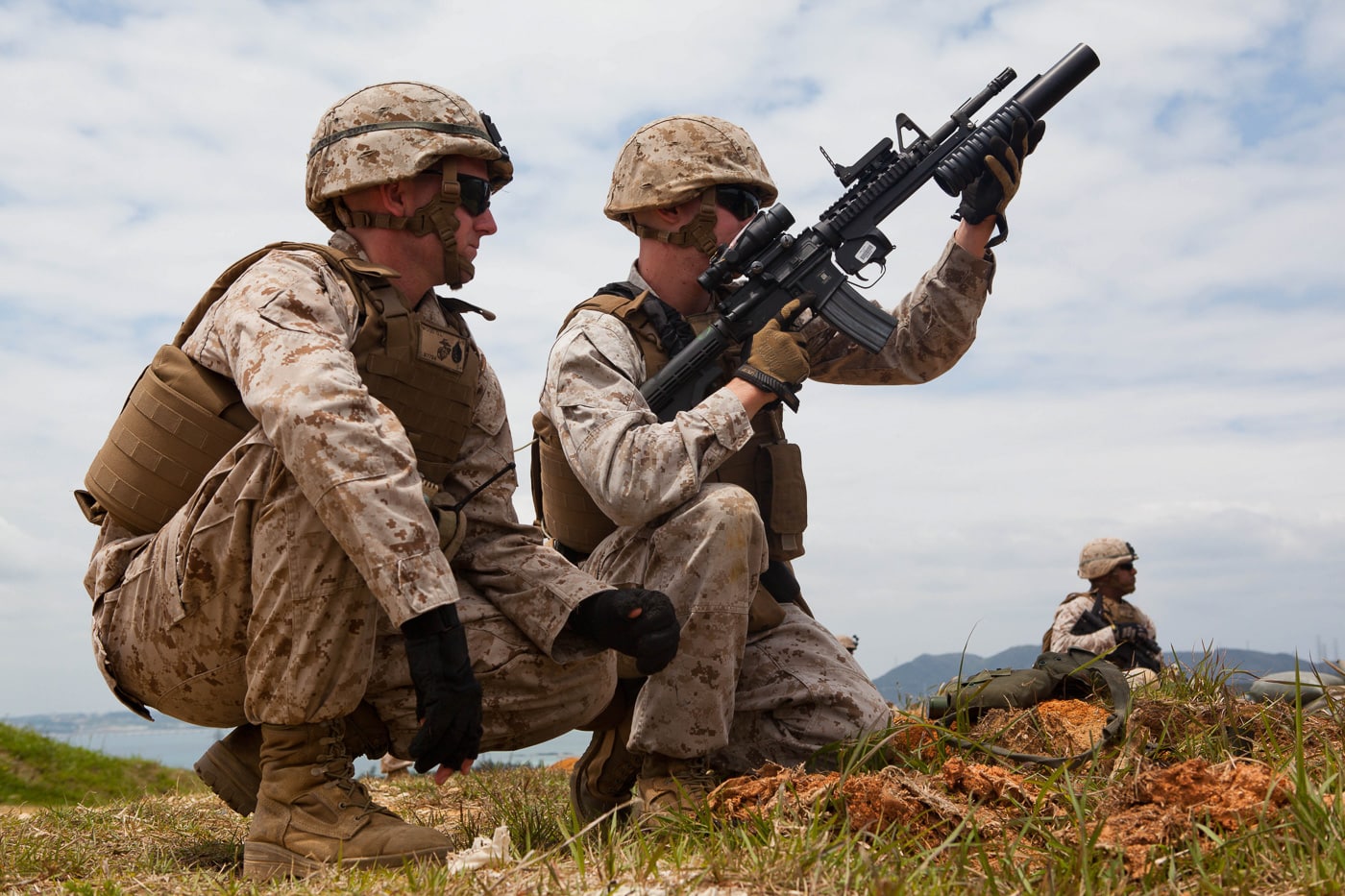
Okay, so let’s pick this apart. Brian DePalma’s magnum opus Scarface was indeed a cinematic classic. Much like Apocalypse Now that took its inspiration from the 19th-century Joseph Conrad novella Heart of Darkness, the Scarface screenwriter Oliver Stone loosely adapted the story of Al Capone into the setting of 1980’s Miami. Al Pacino’s portrayal of the lost drug lord Tony Montana was arguably the most powerful role of his career.
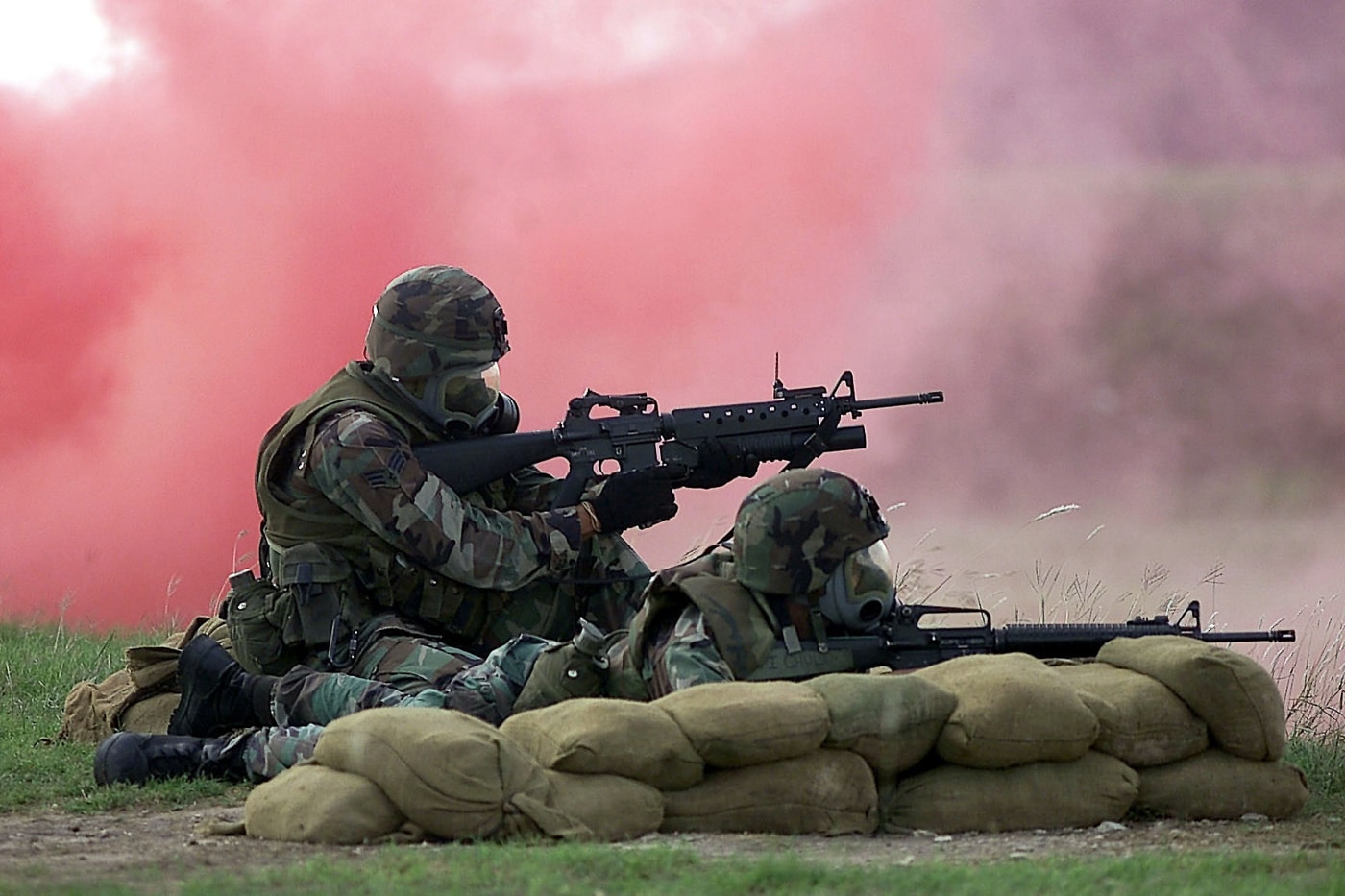
The tactics of the shootout were, as expected, pretty ate up. Tony only fired two rounds out of his M203. In both cases the warheads should not have had time to arm based upon the abbreviated range. Tony did swap magazines a couple of times in his M16, so there’s that. In the final shootout, the Skull creeps up behind Tony with his shotgun oblivious to the dozen or so assault rifles and submachine guns shooting in his direction as they busily transform the doomed drug lord into so much dog food.
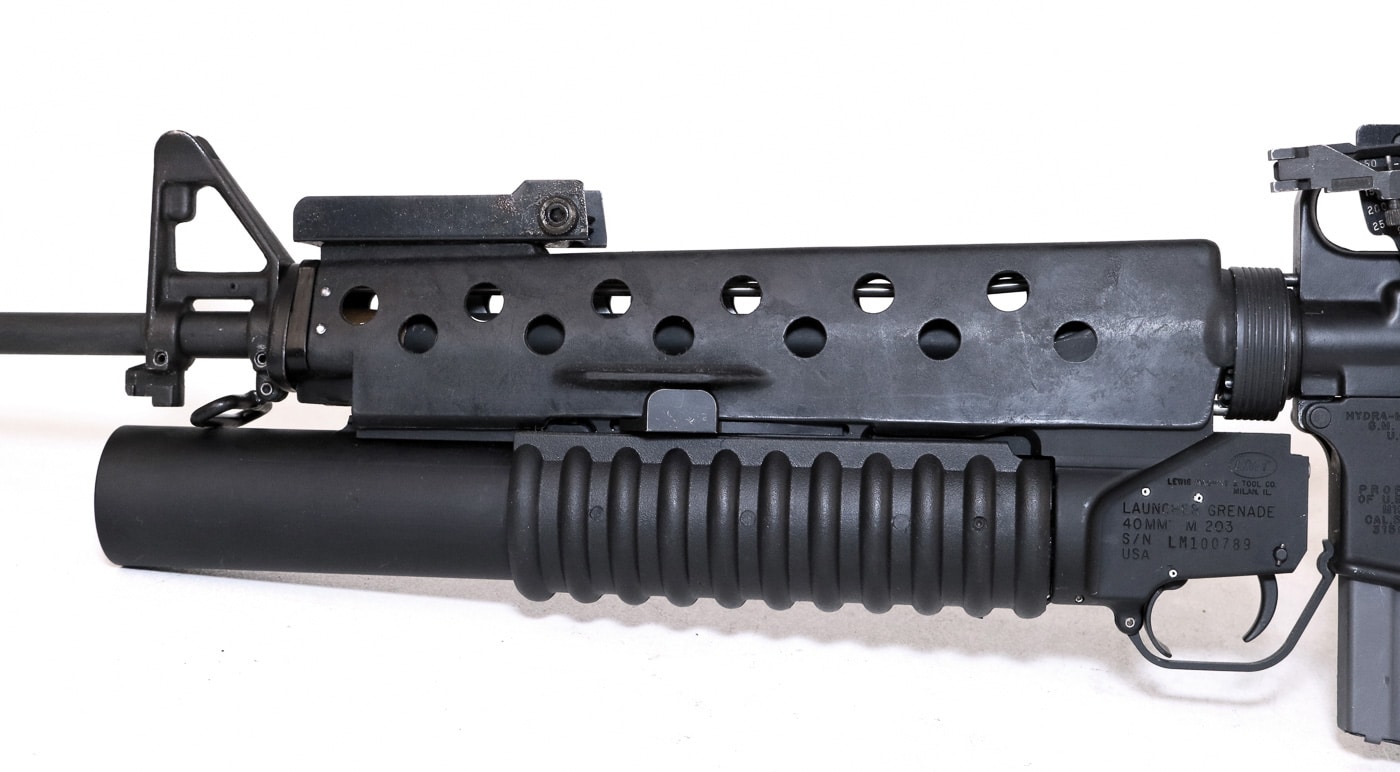
I’m nothing special, but I have some cool friends. I’ve actually hefted the weapon used in that scene. The M16 was fairly unremarkable, and the M203 was a theatrical dummy. However, back in 1983 for an impressionable young man planning a career as an Army officer, that cinematic sequence ignited a lifelong love affair with the M203 grenade launcher. I subsequently used them on and off for eight years in uniform. When finally I accumulated the means I bought my own.
In the Beginning…
The M203 grenade launcher is itself fairly uninspired. A slide-action, single-shot design, the action cocks automatically on opening. It is, in essence, just a big honking rifled tube that rides underneath the host rifle. There is a synthetic handguard riveted onto the barrel and a pivoting safety located inside the trigger guard.
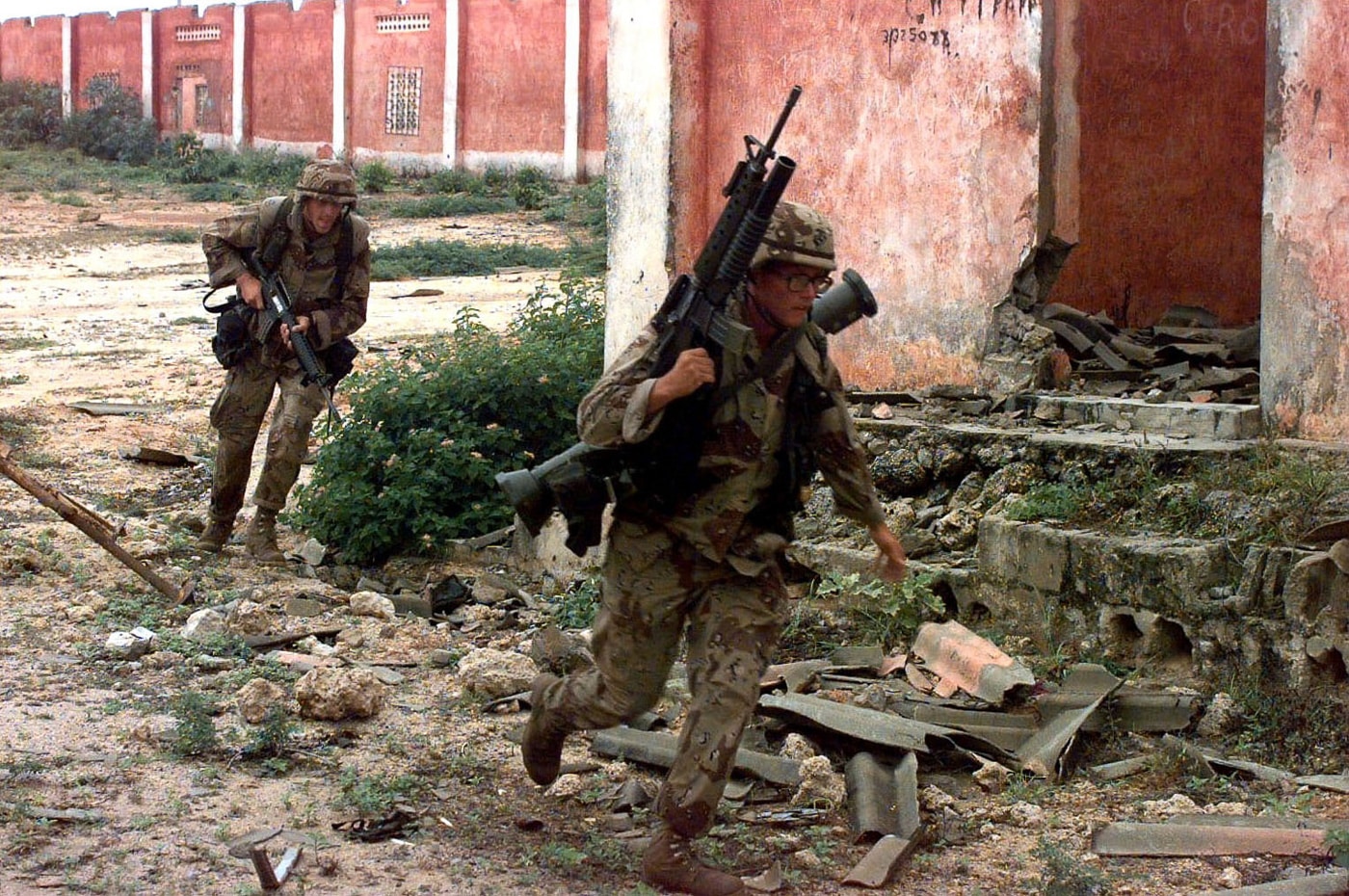
To load the M203, you thumb the barrel release on the left and slide the tube forward. Slip in a round, close the tube, and ensure the safety is off. Point the M203 at something you dislike and squeeze. On the full-sized rig, there is a simple ladder sight attached to the top of the handguard or a more complex folding quadrant sight on the handguard. The real magic of the M203 is its ammo.
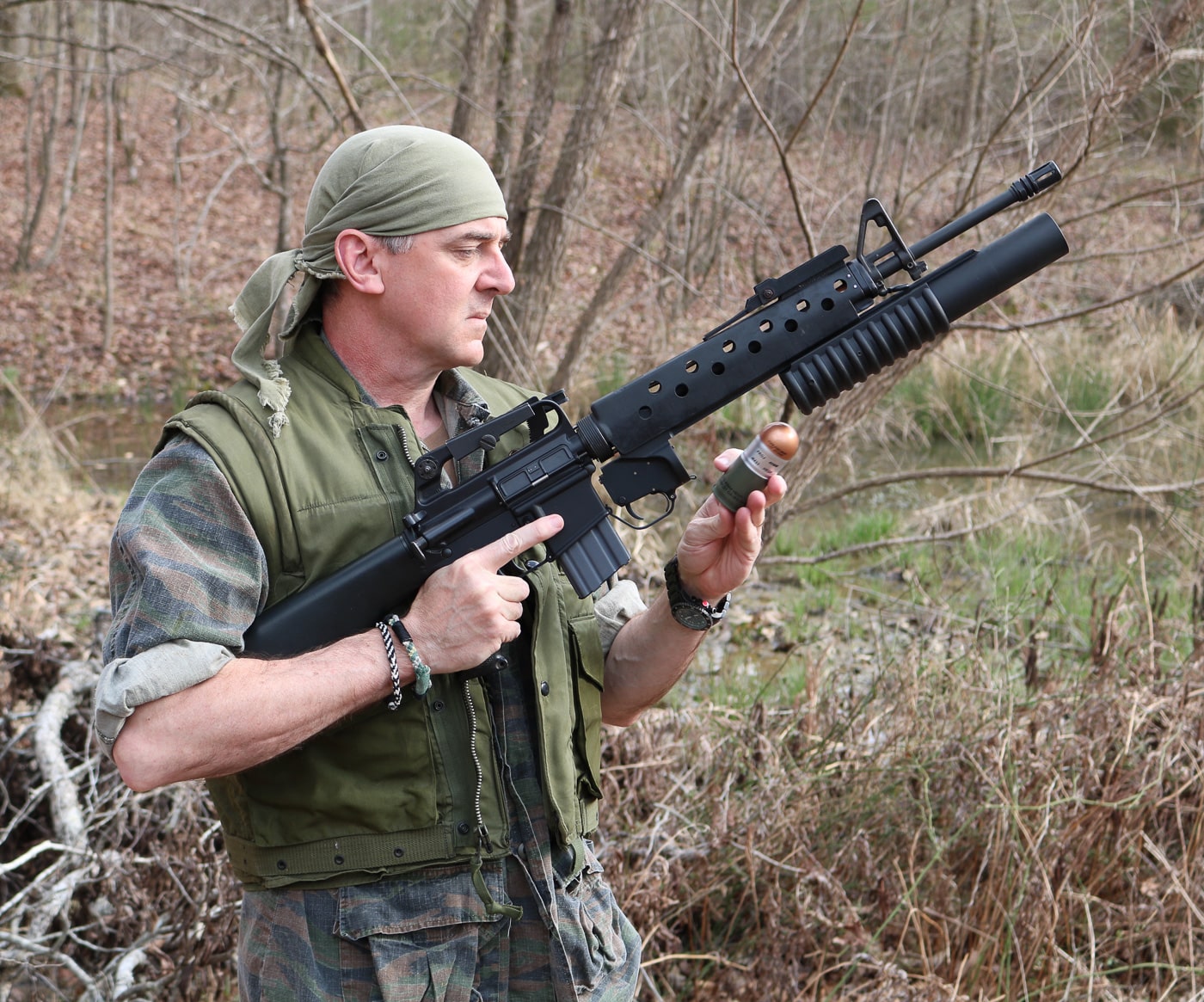
Like so many innovative weapon systems in common use now, the technology that drives our 40mm rounds today was derived from furious engineering efforts during World War II. With the war raging, the Germans desperately churned out weapons to equip their massive army battling on two fronts. Meanwhile, British and American heavy bombers pounded German industrial facilities day and night. In an effort at conserving both propellant stocks and raw materials, the Germans designed the Hoch-und-Niederdruck System. This roughly translates into High-Low Pressure System.
Conventional high-velocity anti-tank cannon consumed relatively modest volumes of propellant, but required heavy barrels and breeches. Recoilless weapons like the Panzerfaust and Panzerschreck, by contrast, were far easier to produce but consumed vast quantities of chemical propellant. The German High-Low Pressure System was designed to remedy that.
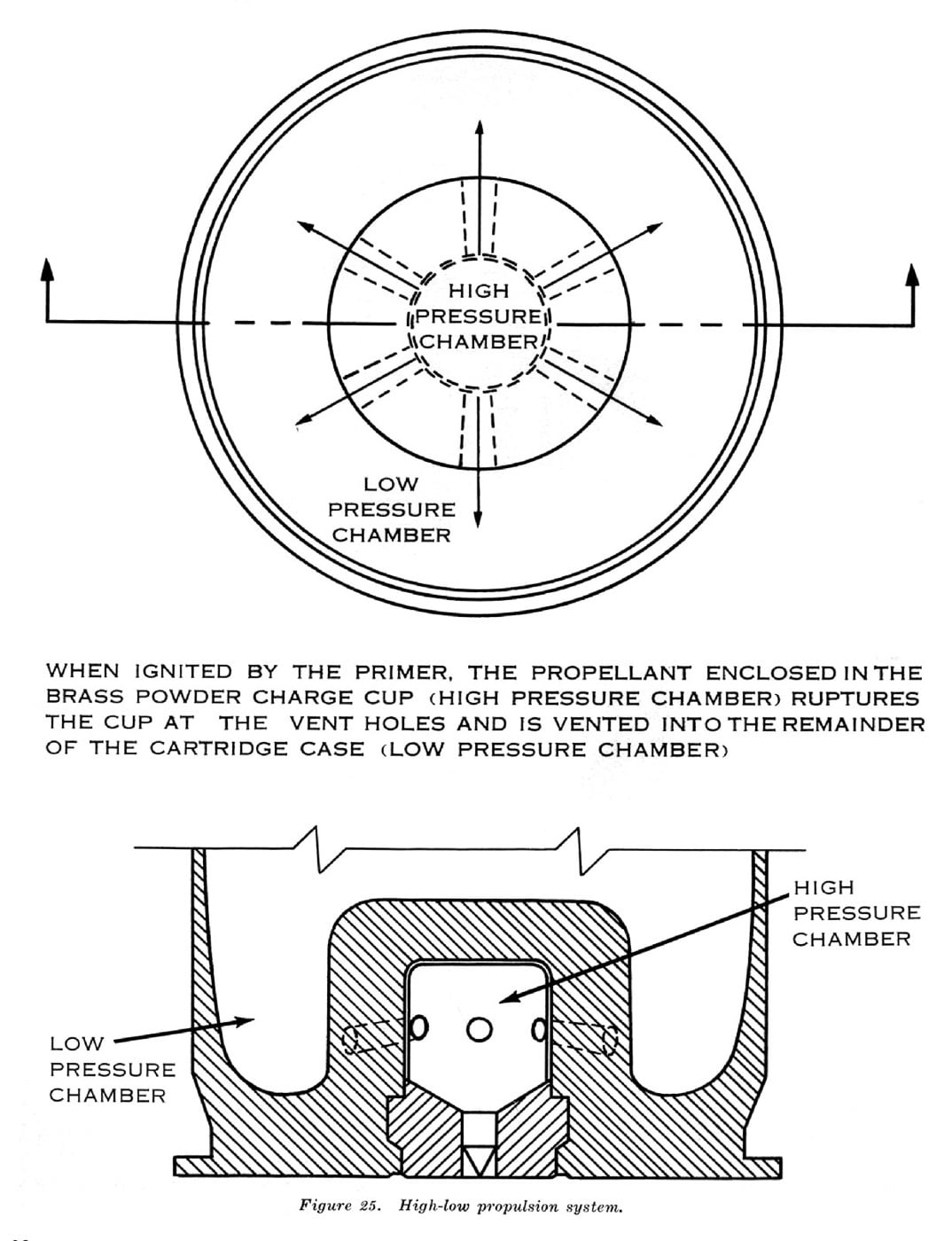
This revolutionary design is essentially a pressure vessel within a pressure vessel. High-pressure gases from the first chamber blew out a thin metal disk to spill into a second, larger chamber contained within a metallic shell. The resulting design accelerated a projectile relatively slowly resulting in a diminished recoil impulse allowing for a more generous payload. It also conserved propellant compared with other recoilless weapons.
Americanization
In 1960, the U.S. Army formally adopted the M79 Grenade Launcher. The 40mm grenade fired from the M79 was specifically designed to cover the dead space between hand grenades and 60mm mortars. By incorporating the German High-Low Pressure System into a stubby cartridge, the relatively low-velocity projectiles described a high arc such that they could drop in vertically behind cover.
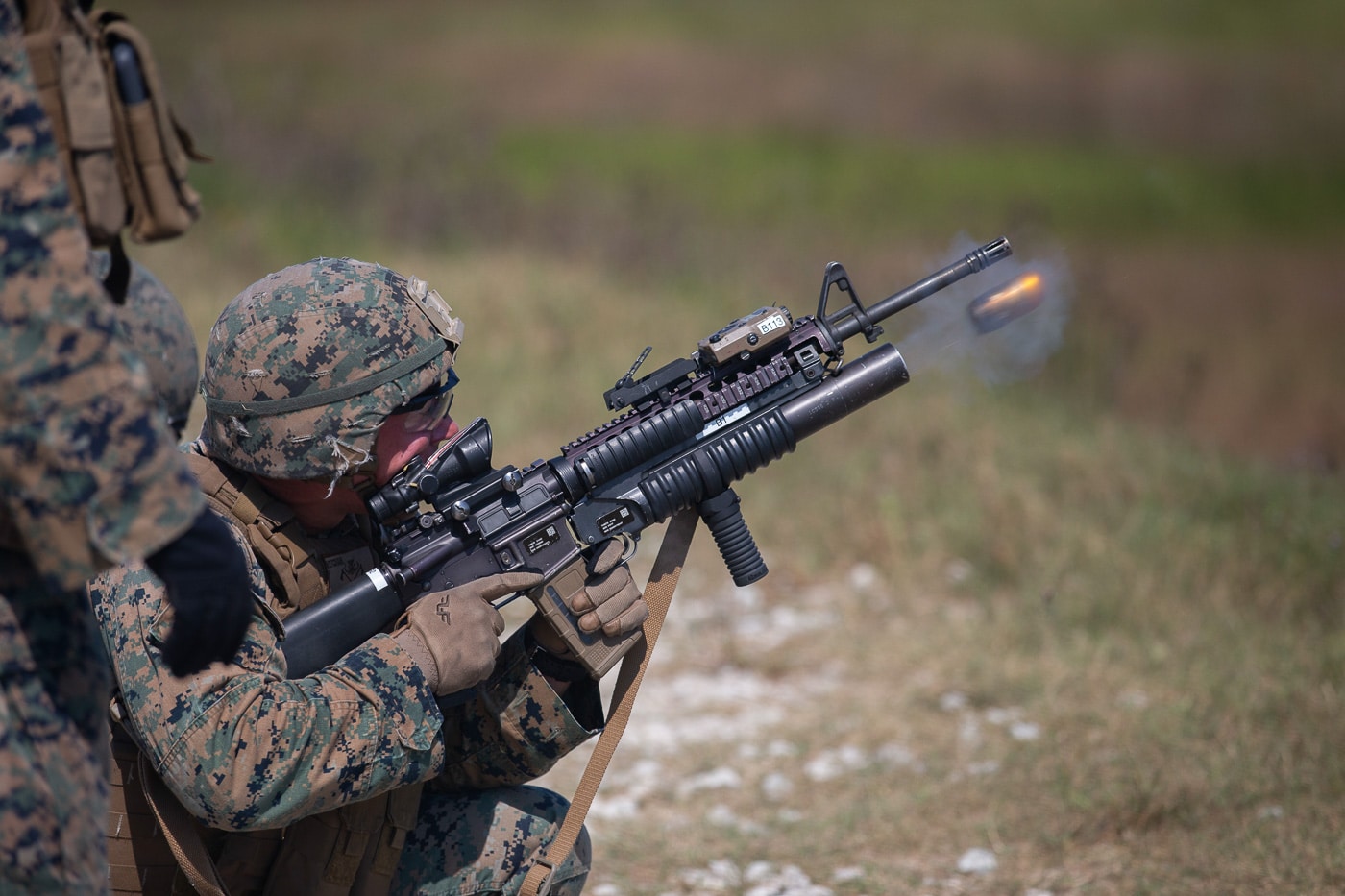
The effective casualty radius for standard HEDP (High Explosive Dual Purpose) round is five meters. The warhead will punch through two inches of steel armor plate. The maximum effective range is about 400 meters against area targets and 150 meters against point targets such as windows. All HE 40 mm rounds are spin armed and do not arm themselves until they have travelled about 30 meters beyond the tube.
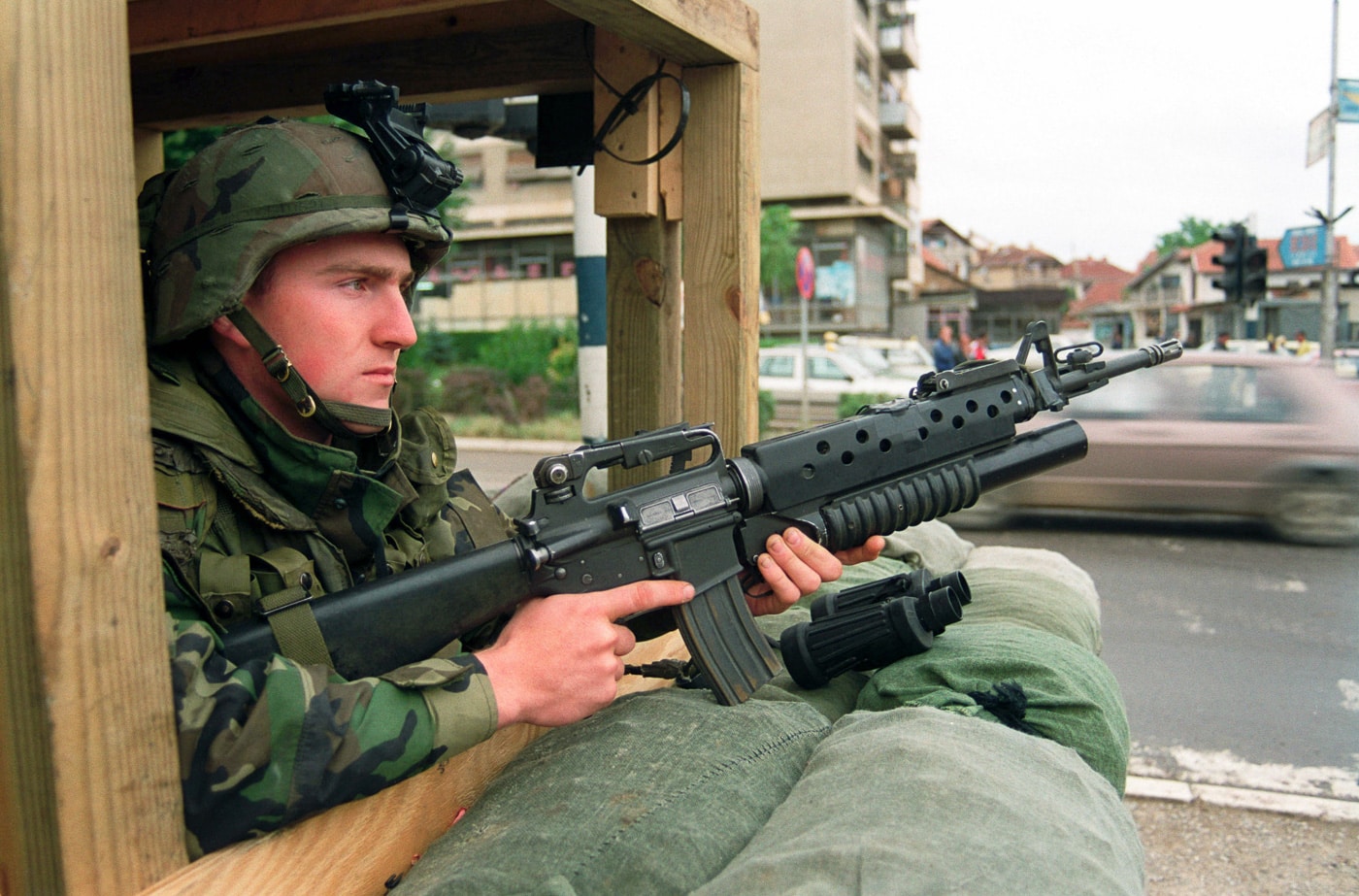
For all its radical capabilities, the M79 was a single-shot weapon. Grenadiers were typically issued a 1911 handgun as a back-up. However, on the modern battlefield, the lack of a rifle was a serious handicap in a firefight.
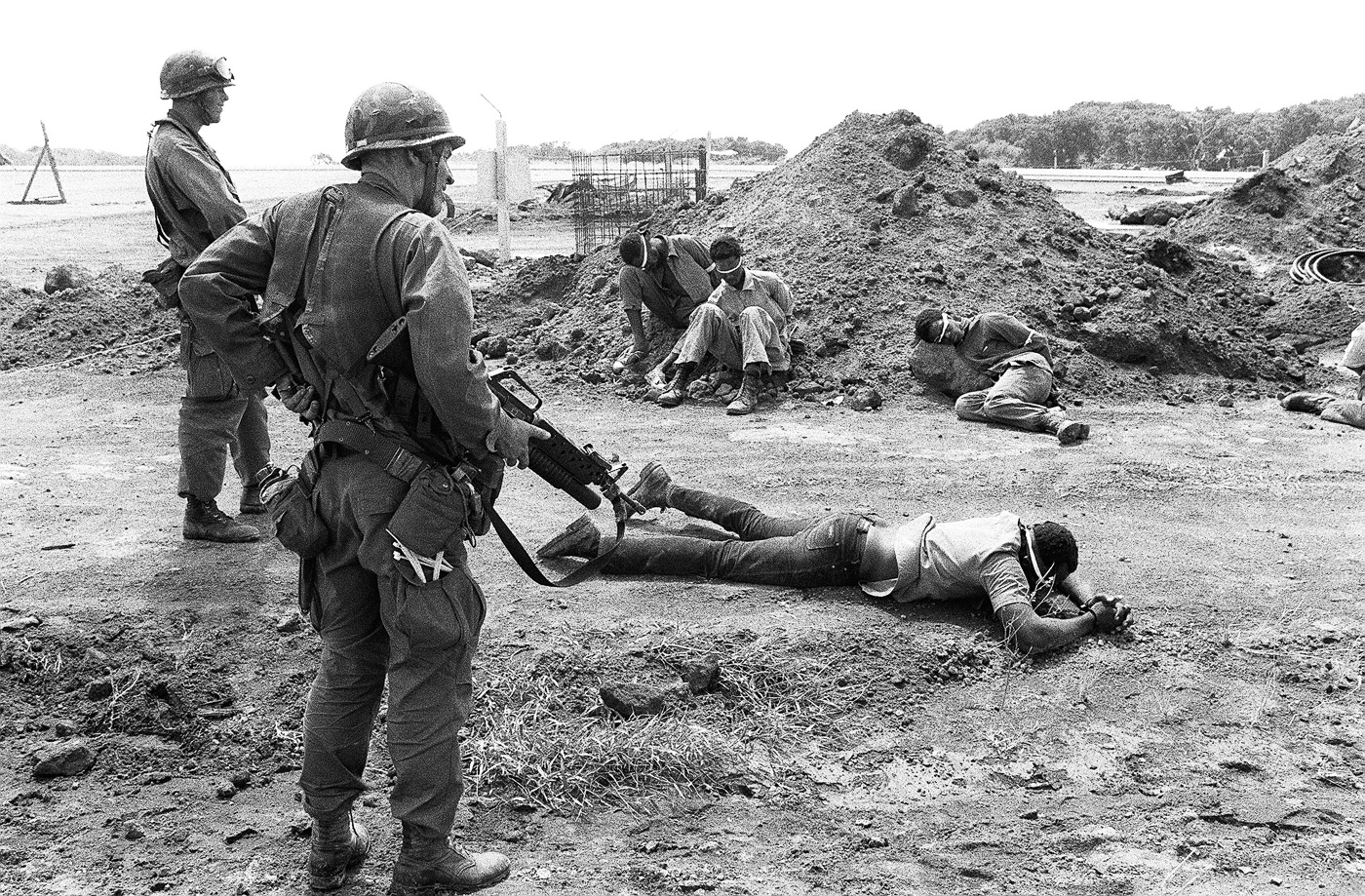
The answer was the XM148 under-barrel grenade launcher. This single-shot launcher mounted underneath the barrel of a standard M16. The XM148 incorporated an extended trigger assembly that was accessible without removing the firing hand from the pistol grip. This weapon saw limited field use in Vietnam but was found to be susceptible to accidental discharges when jungle foliage caught in the exposed trigger. The subsequent M203 effectively addressed these problems.
Ruminations
An M16 or M4 equipped with an M203 is undeniably portly. Additionally, the slide-action nature of the design limits the length of the ammunition that fits in it. The current replacement, the M320, sports a pivoting barrel that alleviates that problem.
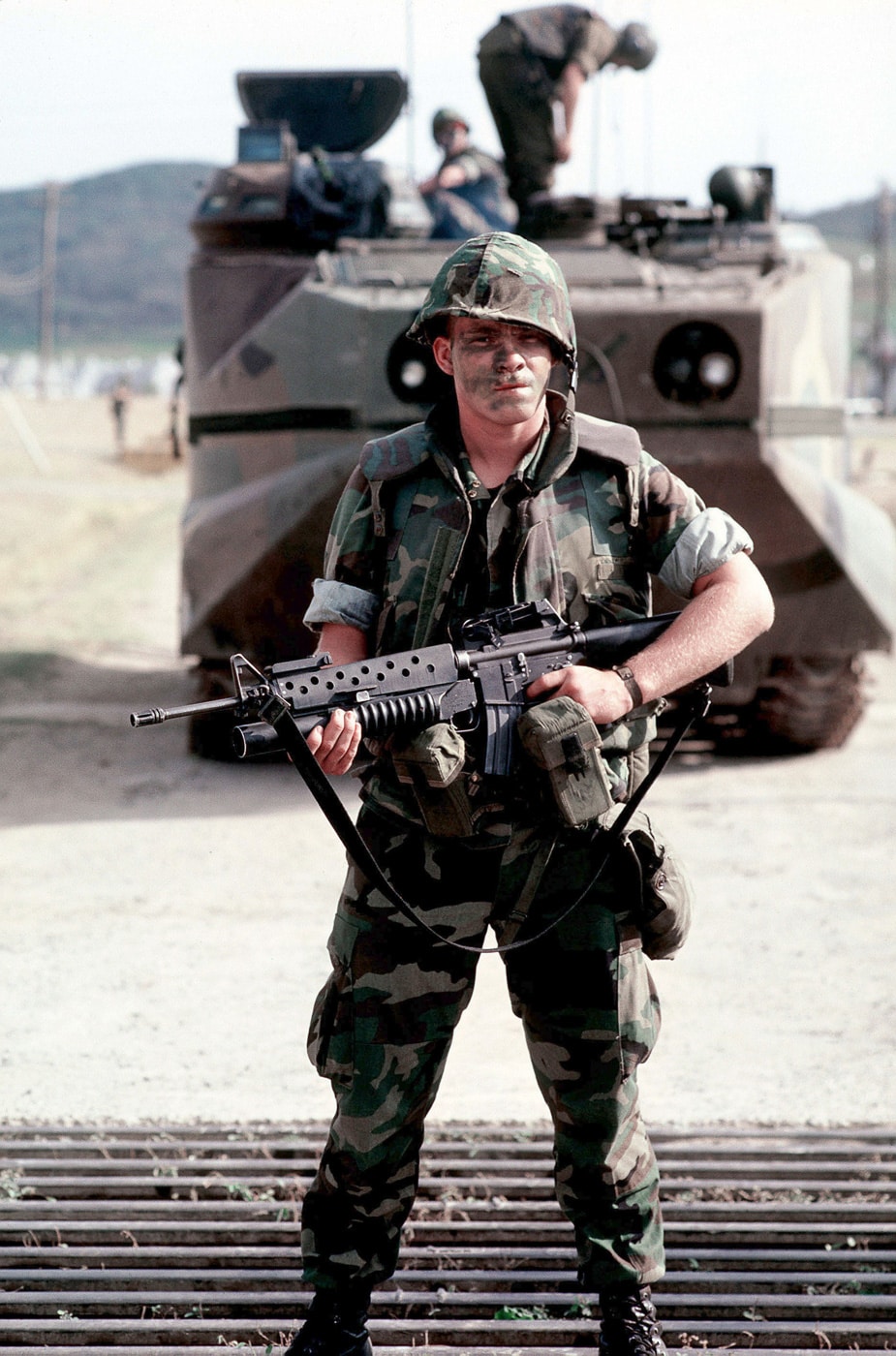
My M203 came from Lewis Machine and Tool. The M203 is classified as a Destructive Device (DD) and requires an extensive process to transfer. Live M433 HEDP rounds are literally non-existent on the civilian market, but Pace Defense will sell you all manner of cool-guy stuff to legally keep your registered M203 amply fed with alternate ammo options.
Owning your own M203 is lyrically impractical but nonetheless remains more fun than watching chimps manage Slinkies. Heavy, bulky, and expensive yet inimitably cool, the M203 is a proper addition to any well-seasoned gun collection. Say hello to my little friend … .
Editor’s Note: Be sure to check out The Armory Life Forum, where you can comment about our daily articles, as well as just talk guns and gear. Click the “Go To Forum Thread” link below to jump in!
Join the Discussion
Featured in this article
Continue Reading
Did you enjoy this article?

 428
428







